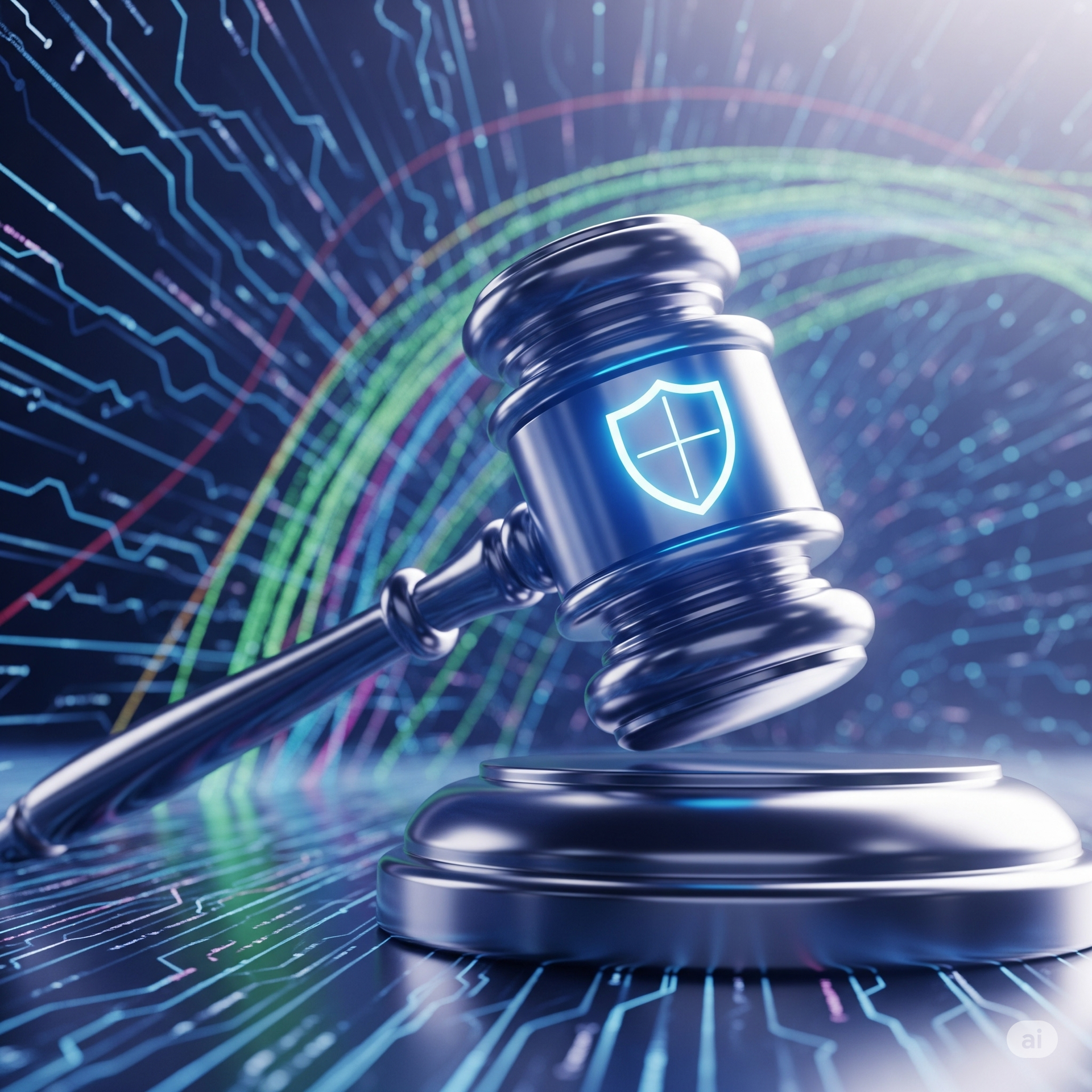The Future of Authentication: Why Passkeys Are Superior to Passwords
December 16, 2024
Unlocking a New Level of Security: The Rise of Passkeys

The Future of Authentication: Why Passkeys Are Superior to Passwords
Passwords have long been the primary method of securing online accounts, but they come with significant vulnerabilities. They're often easy to guess or steal, and many people use the same password across multiple platforms. This practice leaves users exposed to cyber-attacks.
The sheer number of passwords that individuals need to remember leads to risky habits. Users might create weak passwords or store them insecurely, making it easier for cybercriminals to breach their accounts. Alarmingly, 61% of all data breaches involve stolen or hacked login credentials.
In response to these security challenges, a better solution has emerged: passkeys. Passkeys not only enhance security but also provide a more convenient way to access your accounts.
What Is Passkey Authentication?
Passkey authentication generates a unique code for each login attempt, which is then validated by the server. This code is created using a combination of user information and data from the device being used to log in.
Think of passkeys as digital credentials that allow you to authenticate with a web service or cloud-based account without needing to enter a username and password.
This technology leverages Web Authentication (WebAuthn), a core component of the FIDO2 authentication protocol. Instead of relying on traditional passwords, it uses public-key cryptography for user verification. The authentication key is securely stored on your device—whether it's a computer, mobile device, or security key—and is used by passkey-enabled sites to log you in seamlessly.
Advantages of Using Passkeys Over Passwords
Enhanced Security
Passkeys offer a higher level of security compared to traditional passwords. They're significantly harder to hack, especially when they incorporate biometric data (like facial recognition or fingerprint scans) and device-specific information (such as MAC addresses or location). This combination makes unauthorized access exceedingly difficult for hackers.
Greater Convenience
Remembering numerous complex passwords can be challenging and time-consuming. Forgetting passwords is common, and resetting them can hinder productivity—each reset takes an average of three minutes and 46 seconds. Passkeys eliminate this hassle by providing a secure, single code that can be used across all your accounts. This streamlines the login process and reduces the likelihood of forgotten or misplaced credentials.
Phishing
Resistance
Credential phishing scams are prevalent, with scammers tricking users into revealing their login information on fake websites. With passkey authentication, this threat is greatly diminished. Even if a hacker obtains your password, they cannot access your account without the unique passkey stored on your device. This makes passkeys inherently resistant to phishing attempts.
Potential Drawbacks of Using Passkeys
While passkeys represent a significant advancement in authentication technology, there are some considerations when adopting them at this stage.
Limited Adoption
One of the primary drawbacks is that passkeys are not yet widely adopted. Many websites and cloud services still rely on passwords and haven't implemented passkey capabilities. This means you may need to continue using passwords for certain accounts until passkeys become more universally supported. Managing both passkeys and passwords can be slightly inconvenient during this transitional period.
Additional Hardware and Software Requirements
Passwords are free and easy to create—you simply choose them when signing up for a site. Passkeys, however, require additional hardware and software to generate and validate the codes. For businesses, this can mean initial costs for implementation. Nonetheless, the potential savings from enhanced security and improved user experience can outweigh these expenses over time.
Preparing for the Future of Authentication
Passkeys offer a more secure and convenient alternative to passwords. They're harder to hack and simplify the login process. Although passkeys are not yet universally adopted and may require an investment in new technology, they present a promising solution to the widespread problem of weak passwords. Embracing passkeys now positions your organization at the forefront of cybersecurity advancements.
Need Help Improving Your Identity and Account Security?
There's no better time to explore passkey authentication and start integrating it into your organization. By acting now, you can enhance your security posture and provide a better experience for your users.
Give us a call today to schedule a consultation and take the first step toward a more secure future.
HCS Technical Services

Every day, your business sends and receives dozens, maybe hundreds, of emails. But what if we told you that without proper email security protocols in place, every single message could be a potential gateway for cybercriminals to infiltrate your business? If you're a small business owner in San Marcos , Austin, Wimberley, or New Braunfels, this isn't just a theoretical concern. It's a daily reality that could cost you everything. The Email Security Crisis Facing Small Businesses Recent studies show that 91% of cyberattacks begin with email . Yet most small businesses operate with email systems that are essentially wide open to attackers. Why? Because they're missing three critical security protocols that act as your email's first line of defense: SPF (Sender Policy Framework) DKIM (DomainKeys Identified Mail) DMARC (Domain-based Message Authentication, Reporting, and Conformance) Without these protocols properly configured, your business is vulnerable to: Email Spoofing and Phishing Attacks Cybercriminals can easily impersonate your domain, sending fake emails that appear to come from your business. This damages your reputation and can trick your customers into sharing sensitive information. Business Email Compromise (BEC) Attackers can intercept and manipulate your email communications, potentially redirecting payments or stealing confidential business information. Deliverability Issues Major email providers like Gmail and Outlook are increasingly rejecting emails from domains without proper authentication, meaning your legitimate business emails might never reach your customers. The Real Cost of Poor Email Security Consider this scenario: A local Austin restaurant had their email domain spoofed by cybercriminals who sent fake invoices to their suppliers. The result? $15,000 in fraudulent charges, damaged vendor relationships, and weeks of recovery time, all because basic email security wasn't in place. This isn't an isolated incident. Small businesses lose an average of $25,000 per email security breach, and many never fully recover from the reputational damage. What Are SPF, DKIM, and DMARC? Let's break down these essential email security protocols in simple terms: SPF (Sender Policy Framework) tells receiving email servers which IP addresses are authorized to send emails on behalf of your domain. Think of it as a guest list for your email domain. DKIM (DomainKeys Identified Mail) adds a digital signature to your outgoing emails, proving they actually came from your domain and haven't been tampered with during transit. DMARC (Domain-based Message Authentication, Reporting, and Conformance) ties SPF and DKIM together, telling receiving servers what to do with emails that fail authentication—and provides you with reports on attempted spoofing. Why Small Businesses Struggle with Email Security Most small business owners know they need better cybersecurity , but email authentication often gets overlooked because: It's technical and confusing - Setting up these protocols requires DNS knowledge that most business owners don't have It's not visible - Unlike a firewall or antivirus, you can't "see" email authentication working It seems optional - Until something goes wrong, many businesses don't realize how critical it is Fear of breaking email - One wrong configuration can stop all email delivery The HCS Solution: Professional Email Security Setup At HCS Technical Services, we've seen too many local businesses fall victim to preventable email attacks. That's why we're now offering specialized Email Security Authentication Projects —focused, one-time services designed specifically for small businesses that need their email security fixed quickly and correctly. What Our Email Security Service Includes: Complete SPF Record Setup - We'll identify all legitimate email sources for your domain and create a properly configured SPF record DKIM Implementation - We'll generate and install DKIM keys for all your email services, ensuring your messages are digitally signed DMARC Policy Configuration - We'll set up DMARC with the right policy level for your business, starting with monitoring and progressing to enforcement DNS Configuration - All necessary DNS records will be properly configured and tested Verification and Testing - We'll thoroughly test your email authentication to ensure everything works correctly Documentation and Training - You'll receive clear documentation of what was implemented and basic training on monitoring your email security Why Choose HCS for Your Email Security Project? Local Expertise : We understand the specific needs of businesses in Central Texas Proven Track Record : Over 25 years of experience protecting local businesses Fixed-Price Project : No surprises—you'll know exactly what you're paying upfront Quick Turnaround : Most email security projects completed within 3-5 business days Ongoing Support : While this is a one-time project , we're always here if you need help Don't Wait Until It's Too Late Every day you operate without proper email security is another day you're rolling the dice with your business's reputation and financial security. The good news? This is a problem that can be solved quickly and affordably. Ready to protect your business email? Contact HCS Technical Services today for a free email security assessment. We'll review your current setup and provide you with a clear, no-obligation quote for getting your SPF, DKIM, and DMARC properly configured.

The advent of mobile technology and the rising trend of flexible work environments have led to the widespread use of personal devices in the workplace, known as BYOD (Bring Your Own Device). While this practice of allowing employees to use their smartphones, tablets, and laptops for work offers significant benefits, including increased productivity, lower hardware costs, and improved employee satisfaction, it also introduces considerable risks to network security. Personal devices may not be subject to the same stringent security protocols as company-issued devices, making them vulnerable points of entry for cybercriminals. Without proper safeguards, sensitive company data can easily be accessed or intercepted when transmitted over unsecured networks. Personal devices often lack the necessary encryption, security patches, and anti-virus software that can protect against malware attacks. The combination of these factors makes it imperative for businesses to understand the potential vulnerabilities associated with BYOD practices and adopt a comprehensive security strategy that minimizes risks while maintaining the benefits of flexibility and mobility.

In recent years, the shift to remote work has accelerated, driven by technological advancements and the global pandemic. This transformation has opened up new opportunities for businesses and employees alike, allowing greater flexibility and access to talent worldwide. However, this shift also poses significant challenges, particularly in ensuring secure and efficient IT support for remote and traveling employees. Companies must consider how to protect their data while providing seamless access to necessary resources. The lack of direct oversight and controlled environments that offices typically provide can expose more vulnerabilities. As a result, businesses need strategic solutions that involve an amalgamation of robust IT infrastructure, secure cloud computing, and comprehensive cybersecurity measures. By investing in these areas, companies can adapt to this new work paradigm and safeguard their operations, thereby maintaining productivity and minimizing risks.

In the rapidly evolving business landscape, staying competitive requires more than just a strong product or service. Technology is at the core of operations, decision-making, and customer interactions in nearly every industry. A dedicated technology partner plays a crucial role by providing expertise, support, and innovative solutions tailored to the unique needs of a business. Such a partnership can help businesses leverage the latest technologies to improve efficiency, drive growth, and respond quickly to market changes. By outsourcing IT functions to an experienced technology partner, companies can focus on their core activities while benefiting from cutting-edge technology and comprehensive support. This proactive approach ensures that businesses are equipped with the knowledge and tools needed to navigate technological challenges, seize new opportunities, and maintain a competitive edge in their market. A technology partner becomes a strategic part of the business, helping to align technological initiatives with business objectives and ensuring that all technology investments are both efficient and effective.

In today's rapidly evolving business landscape, scalability is a critical aspect of IT infrastructure that businesses must understand and address. Scalability refers to the ability of a system to grow and manage increased demand. For many businesses, especially those in dynamic markets, having a scalable IT infrastructure is not just an option but a necessity. As businesses grow, they generate more data, require more storage, and need additional processing power. An IT infrastructure that can seamlessly expand to accommodate growth is essential for maintaining momentum. Without scalability, businesses may encounter performance bottlenecks that can stifle growth, leading to inefficiencies. Additionally, scaling effectively can help businesses avoid excessive upfront costs by enabling them to pay for additional resources only as needed. Understanding the dimensions of scalability—including hardware, software, and network capabilities—allows a business to plan proactively and utilize technology as a lever for growth, ensuring sustained performance and competitive advantage.

In an era where digital threats loom large, businesses are increasingly investing in cybersecurity measures to protect their assets. However, maximizing the return on these investments requires more than just purchasing the latest technology; it demands a comprehensive approach that includes employee security awareness training. This training is a critical component in the cybersecurity strategy of businesses in San Marcos, Austin, Wimberley, and New Braunfels, Texas. Employees are often the weakest link in the cybersecurity chain, inadvertently exposing the organization to risks through phishing scams and other social engineering tactics. By investing in training that focuses on teaching employees to recognize and respond to cyber threats, businesses can significantly enhance their security posture. Moreover, a security-conscious workforce plays an essential role in protecting sensitive company data, thereby preventing costly breaches and maintaining customer trust. Effective training programs not only cover the basic principles of cybersecurity but also instill a culture of vigilance and proactive threat management among employees.

In the realm of IT support, businesses often face a pivotal choice between two predominant service models: Predictable Flat Rate IT Services and Break Fix Support. Understanding the distinction between these models is crucial for any organization aiming to optimize their IT infrastructure while managing costs effectively. Predictable Flat Rate IT Services, often encapsulated under Managed IT Services, provide a subscription-based model where businesses pay a consistent monthly fee for comprehensive IT support. This model emphasizes proactive management of IT systems, aiming to prevent issues before they arise and ensuring seamless operation of digital infrastructure. Conversely, Break Fix Support operates on a reactive approach. Businesses engage IT services only when problems occur, paying for each service on an ad-hoc basis. This method can lead to fluctuating costs and a general unpredictability in budgeting for IT expenses. As companies grow increasingly reliant on technology for operations, understanding these differences helps in evaluating which approach aligns with their long-term strategic goals, risk tolerance, and budget constraints.

Multi-Factor Authentication (MFA) has long been heralded as a robust line of defense against unauthorized access. By requiring users to provide multiple forms of verification, MFA significantly raises the bar for attackers. However, as technology advances, so too do the methods employed by cybercriminals. In 2025, hackers have developed more sophisticated techniques to bypass MFA systems, exploiting human error and technical vulnerabilities alike. While MFA relies on something you know (such as a password), something you have (like a phone or token), and something you are (biometric verification), hackers have found new ways to intercept these factors through phishing, social engineering, and advanced malware. As businesses and individuals become more reliant on digital interactions, the need for an evolving strategy to combat these threats is more pressing than ever. Recognizing the limitations of current MFA implementations and understanding the strategies employed by attackers is essential in developing new defenses that can withstand this relentless onslaught.

The cloud-native approach represents a significant shift in how businesses develop, deploy, and manage applications. It leverages the full benefits of cloud computing, offering scalability, resilience, and flexibility. For businesses considering this transition, it's crucial to understand the core aspects of being cloud-native. This involves adopting microservices architecture, which breaks down applications into small, independent services that communicate over networks. Each service can be developed, deployed, and scaled independently, enabling businesses to build and deploy applications more efficiently. The cloud-native approach also includes utilizing containers, like Docker, to package these microservices and ensure consistency across multiple development and production environments. Additionally, cloud-native embraces infrastructure as code (IaC) practices, automating the provisioning and management of IT infrastructure using code. These elements combine to create an agile development environment that supports rapid innovation and consistent delivery of services. The transition requires significant changes not only to the technology stack but also to organizational processes and culture. Businesses need to be prepared to adopt continuous integration/continuous delivery (CI/CD) pipelines, DevOps practices, and a shift towards agility in both development and operations to fully realize the benefits of a cloud-native strategy.

As we navigate through the digital age, data privacy laws are evolving to address the complexities and advancements within technology sectors across the globe. Understanding these changes is imperative for any business aiming to thrive in today’s data-driven marketplace. New regulations such as the General Data Protection Regulation (GDPR) in the European Union and the California Consumer Privacy Act (CCPA) in the United States set the standard for how personal data should be handled, offering individuals greater control over their personal information. These laws mandate transparency in how companies collect, store, and use data, emphasizing consent and the right to access personal information. As these regulations continue to expand and adapt, businesses worldwide must ensure compliance to avoid hefty fines and reputational damage. Understanding and implementing these laws requires a thorough examination of current data handling practices and restructuring them to align with new legal standards. Recognizing the global impact of data privacy regulations highlights the need for businesses to prioritize cybersecurity strategies to protect not only their assets but also their clients’ trust and confidence.

